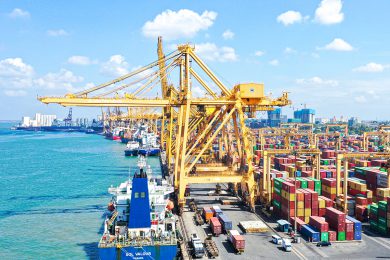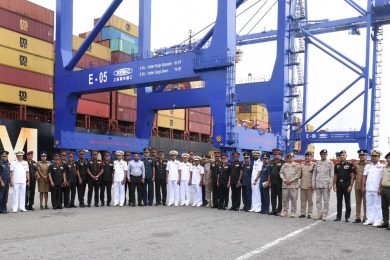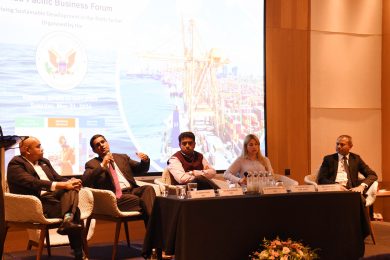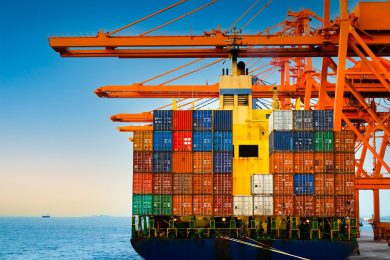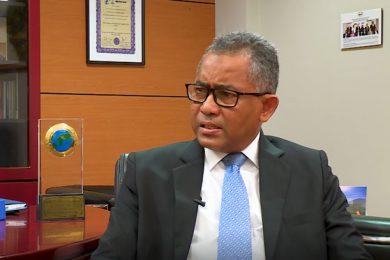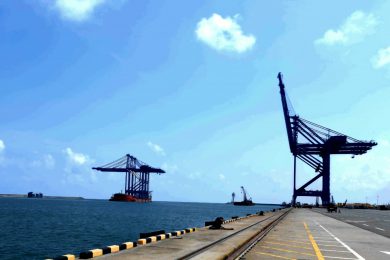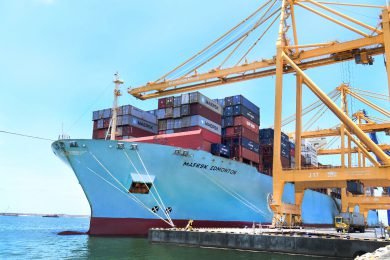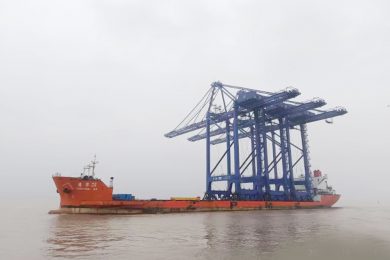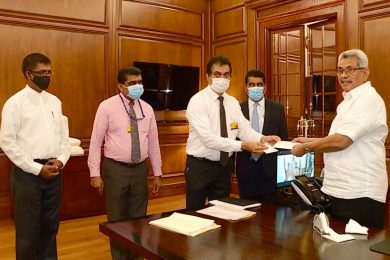The science is clear: The ocean is seriously degraded. Here are 10 ways you can help turn the tide.
by United Nations Development Programme
The ocean is key to a livable planet. But it is under threat from every angle, whether it’s coral bleaching from rising temperatures or overfishing or mounting plastic pollution. In the UN Decade of Ocean Science here are 10 things you can do to lessen your impact and contribute to rebuilding ocean health.
1. Minimize single-use plastic items. Choose cloth bags and refillable cups instead.
Humans have produced 8.3 billion metric tonnes of plastic— half of that in just the last 13 years. That’s equivalent to one tonne of plastic for every person on Earth. From 5 million to 12 million metric tonnes of plastic waste enter the ocean every year. Plastics are found in all parts of the ocean, including the vast depths of the Mariana Trench. They are now even in our bloodstream. Only a tiny fraction of plastics is ever recycled.
.jpg?auto=webp)
2. Try to buy sustainably sourced—certified—seafood, both wild caught and cultured.
Seventeen percent of the world’s animal protein comes from seafood, and about 35 percent of the world’s fish stocks are overexploited. The fisheries sector needs to improve sustainable and transparent seafood supply chains while introducing robust measures to ensure compliance, monitoring and enforcement. You can help by rewarding responsible producers.
.jpg?auto=webp)
3. Buy organic produce to help reduce the use of industrial fertilizer and pesticides that make their way to the ocean.
More than half the world now depends on nitrogen and phosphorous fertilizers for their food, but most of that is not used by crops. Some 10 million metric tonnes of nitrogen enter the ocean every year, about 90 percent comes from agricultural runoff and untreated wastewater, which is leading in turn to excessive algae growth and “dead zones”.
.jpg?auto=webp)
4. When visiting coastal regions, look for hotels and tourism operators with strong sustainability practices.
For some coastal countries and small island developing states, tourism represents 50 percent of their national income. More and more countries are defining their “blue economy” vision—sustainable use of ocean resources for economic growth and jobs as well as social and financial inclusion with a focus on preserving and restoring ocean ecosystems. Give preference to tourism operators that practice sound waste management and sustainable sourcing of seafood and other products. Consider visiting and supporting marine protected areas.
5. Do everything possible to minimize your carbon footprint, which helps reduce ocean acidification, warming and deoxygenation.
Driving and flying less, buying energy efficient appliances and using fewer ‘throwaway’ products are a good start to reducing carbon dioxide emissions. CO2 pollutes the ocean as well as the air; it’s making seawater more acidified, with harmful consequences for many species, particularly shelled animals.
.jpg?auto=webp)
6. Encourage your government to do more for the ocean through effective policies such as enacting extended producer responsibility for plastics.
Sustainable Development Goal 14 – on life below water – receives the lowest level of investment of all the 17 SDGs. Over the past 10 years, assistance to ocean restoration and protection has averaged only US$1.3 billion a year. SDG 14 sets very ambitious targets. None had been met by 2020. While some progress has been made, much remains to be done if the ocean SDG agenda is to be realized by 2030. Governments can play an important role by holding producers accountable for the long-term impacts of their products, by phasing out destructive fisheries subsidies and by meeting your country’s commitments under the Paris Agreement on climate change.
.jpg?auto=webp)
7. Get involved in beach clean-ups and ocean citizen science, and support establishing marine protected areas.
Enjoy a day at the seaside with your friends and clean up while you’re there! The Ocean Decade provides an opportunity for all of us—from natural and social scientists to holders of Indigenous and local knowledge—to design and deliver the science we need for a healthy ocean that benefits everybody.
.jpg?auto=webp)
8. Buy locally sourced seafood to promote the livelihoods of small-scale fishers.
About 59.5 million people are employed in fishing or aquaculture—the vast majority in Asia. The fisheries sector needs sustainable and transparent supply chains. And a level playing for small-scale fishers, who often are at a disadvantage in tapping the markets and resources of their industrial competitors. Support your local fisherfolk, and enjoy the freshest seafood around!
.jpg?auto=webp)
9. Contribute financially and volunteer with organizations that you feel are doing valuable work to protect and restore the ocean.
The world cannot afford to allow the decline in the ocean’s health to continue. Without urgent action, the ocean’s ability to sustain life will worsen, with negative consequences for the global economy and the lives and livelihoods of billions of people. Many non-governmental organization, civil society groups and other organizations are doing important cutting edge work to protect the ocean; research these and support the ones you think are doing the best.
.jpg?auto=webp)
10. Educate yourself about the ocean and the challenges it faces to help you make informed decisions and to educate others.
The ocean is vital to our future as a species. And the “blue economy” contributes about $2.3 trillion a year to the global economy. If the ocean were a country, it would have the fifth biggest GDP. Yet the vast majority of the ocean remains unmapped—we know much more about the surface of Mars than what happens in the deep. Ocean literacy for young people, as well as industry and policy makers, is essential to bringing about institutional and individual change.
.jpg?auto=webp)
Source: © 2022 United Nations Development Programme
Featured image: by Pablo Martinez (Unsplash)



